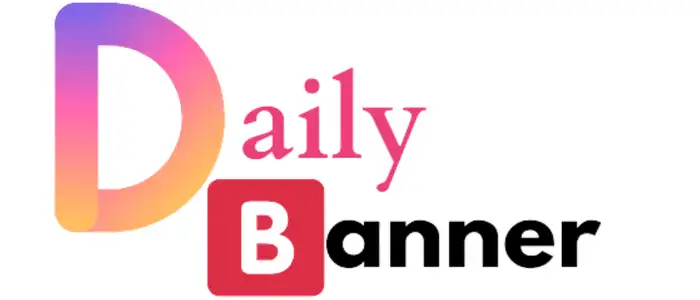The Streaming Revolution Changing the Way We Consume Content
In the digital age, streaming has transformed how people access and consume entertainment, information, and communication. Whether it’s binge-watching TV shows on Netflix, listening to the latest music releases on Spotify, or tuning into live gaming on Twitch, streaming has become a powerful force in modern life. This article explores the evolution of streaming, its various forms, the leading platforms, and its growing influence on culture and technology.
Streaming
Streaming is the continuous transmission of audio or video files from a server to a client. Unlike traditional downloads, which require users to wait until a file is fully transferred, streaming allows instant playback. This real-time access enables users to consume content on-demand across devices with an internet connection.
There are two main types of streaming:
-
Live Streaming: Broadcasting content in real time (e.g., sports, gaming, live events).
-
On-Demand Streaming: Pre-recorded content that users can play at their convenience (e.g., movies, TV shows).
History of Streaming
The roots of streaming go back to the early days of the internet. In the 1990s, the first streaming attempts were made using RealPlayer and early versions of Windows Media Player. However, slow internet connections made it impractical for mass adoption.
As broadband internet became widespread in the early 2000s, streaming became more viable. Platforms like YouTube (launched in 2005) brought streaming into the mainstream. In 2007, Netflix shifted from DVD rentals to offering online video streaming, a move that would disrupt the entire entertainment industry.
Over the next decade, advances in mobile technology, cloud computing, and internet infrastructure enabled the explosive growth of streaming. By the 2020s, streaming had become the dominant way people consume entertainment globally.
Evolution of Streaming
Streaming started gaining popularity in the early 2000s as broadband internet became more accessible. Initially limited by slow internet speeds and buffering issues, the technology has since improved dramatically. Key milestones include:
-
2005–2010: YouTube’s rise popularized user-generated video.
-
2011: Netflix introduced original streaming content, disrupting traditional TV.
-
2015–2020: Explosion of streaming services across entertainment, education, and social media.
-
Present: Streaming is mainstream, with ultra-HD quality and interactive features.
Types of Streaming Platforms
-
Video Streaming Services
-
Netflix, Amazon Prime Video, Disney+, Hulu: Offer movies, series, documentaries, and original programming.
-
YouTube: Hosts user-generated content, vlogs, educational videos, and more.
-
Twitch: Specializes in game streaming and interactive live chats.
-
-
Music Streaming Platforms
-
Spotify, Apple Music, YouTube Music: Provide access to millions of songs, curated playlists, and podcasts.
-
SoundCloud: Known for independent artists and music discovery.
-
-
Gaming and eSports
-
Platforms like Twitch, Facebook Gaming, and Kick allow gamers to stream gameplay, build communities, and even earn money through subscriptions and donations.
-
-
Social Media Streaming
-
Facebook Live, Instagram Live, and TikTok Live allow users to stream in real time to followers, encouraging
-
interaction and engagement.
-
-
Educational and Professional Streaming
-
Platforms like Zoom, Google Meet, and Microsoft Teams enable virtual meetings, webinars, and online classes.
-
The Benefits of Streaming
-
Convenience: Access any content, anytime, from anywhere.
-
No Storage Issues: Content plays in real-time without downloading.
-
Personalization: Platforms use algorithms to recommend content based on preferences.
-
Interactivity: Viewers can engage through comments, likes, and live chats.
-
Content Diversity: From Hollywood blockbusters to indie creators, streaming offers something for everyone.
Major Streaming Platforms
Each streaming sector has dominant platforms that shape how we consume content.
Netflix
A pioneer in subscription-based streaming, Netflix produces original content (like Stranger Things and The Crown) and licenses movies and series worldwide.
YouTube
The largest video platform globally, YouTube offers both user-generated and professional content. Its monetization system allows creators to earn revenue via ads, memberships, and super chats.
Twitch
Owned by Amazon, Twitch is the hub for game streaming and eSports. It allows content creators to stream gameplay, interact with viewers, and build communities.
Spotify
Spotify dominates music streaming, offering curated playlists, podcasts, and AI-generated music suggestions.
Disney
Disney’s streaming service capitalizes on its extensive IP library, including Marvel, Star Wars, and Pixar franchises, quickly gaining subscribers since its launch.
The Impact on Traditional Media
The rise of streaming has disrupted traditional media models:
-
TV Networks: Viewership has declined, and many networks now offer their own streaming platforms (e.g., NBC’s Peacock, CBS’s Paramount+).
-
Movie Theaters: Simultaneous streaming and theatrical releases became common during the pandemic, changing how films are distributed.
-
Radio and CDs: Music streaming has largely replaced physical media and terrestrial radio.
This disruption has forced media companies to adapt or risk irrelevance.
The Future of Streaming
Streaming continues to evolve rapidly, driven by technological advances and changing user behavior.
1. 5G and Faster Networks
Faster mobile networks will improve streaming quality and reduce buffering, especially for live video and gaming.
2. Interactive Streaming
Services are experimenting with interactive content, such as Netflix’s Bandersnatch, where viewers choose the storyline. More gamified experiences are expected.
3. Virtual Reality (VR) and Augmented Reality (AR)
Immersive streaming in VR/AR could revolutionize education, entertainment, and training simulations, offering users fully interactive environments.
4. AI-Powered Personalization
Artificial Intelligence will continue enhancing user experience by tailoring content, automating subtitles, and creating synthetic voices or music.
5. Monetization Innovations
New revenue models, like microtransactions, NFTs, and pay-per-minute access, may reshape how creators and platforms earn.
Challenges and Concerns
Despite its advantages, streaming also presents challenges:
-
Bandwidth and Internet Dependency: High-quality streaming requires fast internet.
-
Subscription Overload: With many platforms offering exclusive content, users may end up paying for multiple services.
-
Content Saturation: So much content can make it hard to choose what to watch or listen to.
-
Piracy and Copyright Issues: Illegal streaming sites still exist, raising legal and ethical concerns.
-
Environmental Impact: Streaming at scale uses significant energy and data center resources.
Conclusion
Streaming has revolutionized how we access and interact with digital content. It’s no longer just a convenience—it’s a cultural shift that influences entertainment, education, and social connection. As technology continues to innovate, streaming will likely play an even more central role in shaping the digital experiences of the future.
Whether you’re catching up on your favorite series, discovering new music, or attending a virtual event, streaming is here to stay—and it’s only getting better.



